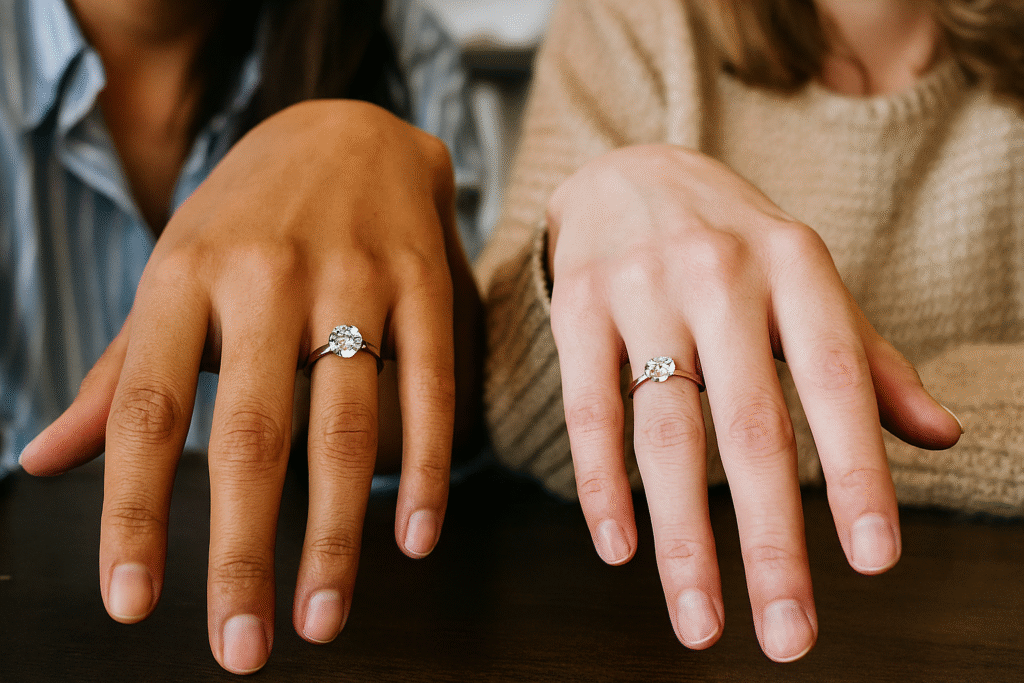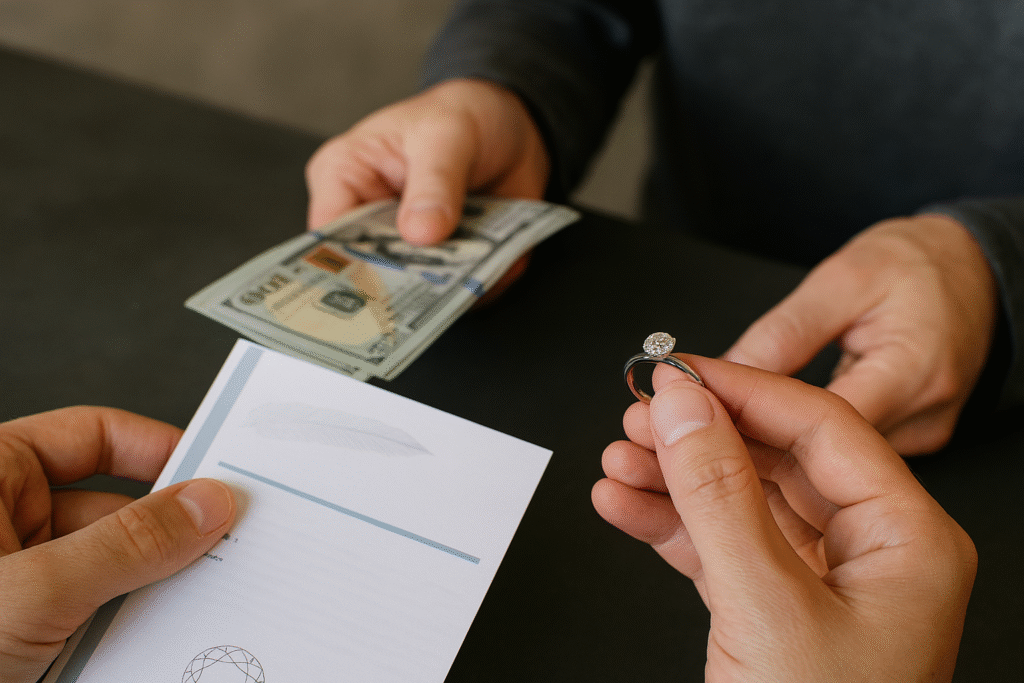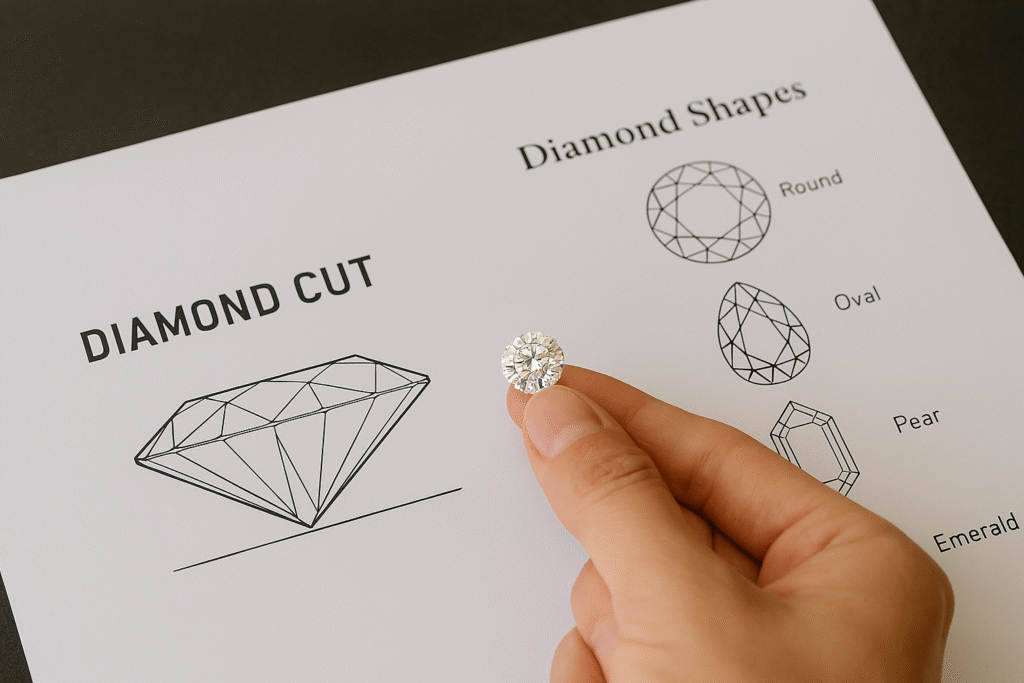Buying a diamond is deeply personal. Yet many buyers fall into what I call “the comparison curse.” The moment a friend shows off their engagement ring, the thought comes: “I want mine to be bigger, clearer, or better.”
The truth is simple: every diamond is unique, just like every buyer’s story. Chasing someone else’s stone often leads to disappointment or overspending. The goal is not to outshine your friend—it’s to find a diamond that matches your taste, budget, and lifestyle.
The Emotional Trap of Comparison
Research shows that 42% of diamond buyers admit comparing their purchase to someone else’s ring. This behavior often drives impulsive decisions and inflated budgets.
As an expert with 40+ years in gemology and the diamond trade, I’ve seen clients regret buying a “status” stone instead of the right one for them.
The key is this: Your diamond should reflect your values, not your neighbor’s.
Case Example
One client came to me after buying a 2-carat diamond just to keep up with her friend. A year later, she traded it for a smaller, better-cut diamond that actually looked brighter and matched her taste.
This is proof that size or “social comparison” is never the full story.
Practical Advice
- Focus on cut and brilliance over size. A well-cut 1.5-carat can outshine a poorly cut 2-carat.
- Set your budget first. Avoid spending just to match someone else’s stone.
- Look for certification. Always buy diamonds with GIA or AGS grading reports.
- Think about wearability. Choose what feels comfortable for daily life, not just for social media photos.
FAQ
Q: Why do people compare their diamonds to others?
A: Because jewelry is emotional and visible. But comparison often leads to overspending.
Q: Can a smaller diamond look better than a larger one?
A: Yes. A well-cut smaller diamond often has more sparkle than a larger but poorly cut one.
Q: What is the smartest factor to prioritize?
A: Cut quality. Research shows cut contributes up to 60% of a diamond’s sparkle.
Q: Should I buy the same diamond shape as my friend?
A: No. Choose a shape that flatters your hand and fits your personal style.
Suggested reading:
How to Budget for an Engagement Ring
Understanding Diamond Quality Factors
Introduction
This comprehensive Watch Buying Guide answers the most common questions about timepieces.
Whether you’re purchasing your first watch or adding to your collection, these expert insights help you make informed decisions.
From understanding movement types to choosing the right size for your wrist, you’ll find everything needed before making a purchase.
What Types of Watches Should You Consider? – Watch Buying Guide Insights
Understanding the five main categories helps narrow your options:
- Mechanical watches – Use springs and gears. No battery needed.
- Quartz watches – Battery-powered; most accurate.
- Automatic watches – Wind themselves from wrist movement.
- Digital watches – Display time numerically on a screen.
- Smartwatches – Connect to your phone and track fitness data.
Accuracy Expectations – Watch Buying Guide Tips
- Quartz watches – Lose about 15 seconds per month.
- Mechanical watches – Lose 20–40 seconds per day.
- Atomic watches – Lose 1 second every 100 million years.
- Your phone’s clock stays perfectly accurate.
Water Resistance Considerations
Water resistance ratings affect usage scenarios:
- 30m – Handles rain and handwashing
- 50m – Safe for swimming
- 100m – Suitable for snorkeling
- 200m+ – Scuba diving
Replace gaskets every 2–3 years to maintain resistance.
Maintenance Schedule – Watch Buying Guide Advice
- Quartz watches – Battery replacement every 1–3 years.
- Mechanical watches – Full service every 3–5 years.
- Service costs: $200–800 depending on the brand.
Watch for stopping, running fast/slow, or condensation under the crystal.
Pricing Strategy
- Budget watches – Plastic cases, basic movements
- Mid-range watches – Steel cases, reliable mechanisms
- Luxury watches – Precious metals, hand-finished details
Remember: craftsmanship, materials, and brand prestige drive prices.
Sizing Advice
- 6–7 inch wrists – 38–42mm
- 7–8 inch wrists – 40–44mm
- 8+ inch wrists – 42–46mm
Ensure lugs don’t overhang wrist edges.
Complications to Prioritize
- Date display – Useful daily
- GMT hand – Second time zone
- Chronograph – Stopwatch
- Moon phase – Decorative
- Annual calendar – Adjusts month lengths
More complications = more things that can break.
Maintenance Tips
- Clean with a soft cloth
- Avoid extreme temperatures & magnets
- Wind manual watches daily
- Use watch winders for automatics
- Don’t adjust date between 9 PM–3 AM
Investment Potential
- Most watches lose value after purchase
- Only select Rolex, Patek Philippe, Audemars Piguet models appreciate
- Vintage watches from 1960s–70s show strong growth
- Buy watches you enjoy wearing, not solely for investment
Essential Tools
- Spring bar tool
- Case back opener
- Soft polishing cloth
- Watch cushion
- Demagnetizer
Where to Purchase
- Online – Better selection, often cheaper
- Physical stores – Try before buying
- Authorized dealers – Full warranties
- Grey market – Discounts, limited warranty
- Forums/eBay – Vintage pieces, verify authenticity
Learn More:



